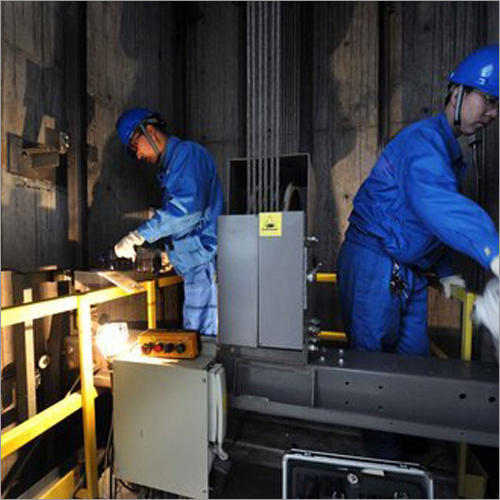Boost Your Solution: Picking Lift Maintenance Services and Repair Companies Near Me
Boost Your Solution: Picking Lift Maintenance Services and Repair Companies Near Me
Blog Article
Comprehensive Overview to Lift Systems and Their Maintenance
Browsing the intricate world of lift systems and their maintenance is a task that requires precision and understanding. From the numerous types of elevator systems in usage to the meticulous adherence to safety and security regulations, the maintenance of these vertical transport devices is a diverse endeavor.
Kinds of Elevator Equipments
Elevator systems can be found in various types, each designed to fit certain building demands and customer needs. The most usual types include hydraulic lifts, grip lifts, machine-room-less elevators, and vacuum lifts. Hydraulic lifts are perfect for low-rise buildings and utilize a hydraulic piston to move the elevator car. Grip lifts, on the various other hand, are more suited for skyscrapers and utilize steel ropes and weights to relocate the car. Machine-room-less elevators are a space-saving option as they do not require a separate device space for the elevator machinery. Vacuum elevators, a much more modern-day innovation, use atmospheric pressure differentials to move the vehicle within a transparent tube.
Each kind of lift system has its own advantages and downsides, making it vital for building owners and developers to carefully consider their specific demands prior to choosing the most ideal choice. Elements such as building elevation, area accessibility, energy performance, and budget plan constraints all play a substantial duty in identifying the very best lift system for a specific building.
Usual Maintenance Concerns
Normal upkeep of lift systems is necessary to make sure smooth procedure and extend their life expectancy. Despite regular upkeep, lift systems can still run into usual upkeep problems that need to be promptly resolved to protect against interruptions in service. Regular inspections and aggressive upkeep can assist identify and deal with these usual upkeep problems before they rise and affect the overall efficiency of the elevator system.
Safety Regulations and Conformity
Sticking to rigorous safety laws and making sure conformity with sector requirements are critical for maintaining the functional integrity of lift systems. Elevators are subject to a thorough set of safety and security guidelines to protect passengers, upkeep personnel, and the basic public. Regulatory bodies such as the Occupational Safety And Security and Health Management (OSHA) in the United States and the European Lift Organization (ELA) in Europe establish standards that cover various elements of elevator style, procedure, installation, and maintenance.
Conformity with these regulations is not only a lawful requirement however additionally a moral responsibility for structure owners and elevator upkeep companies. Failure to fulfill safety requirements can cause penalties, legal obligations, and, most importantly, endanger the safety and security of individuals utilizing the lift. Normal inspections, maintenance checks, and adherence to safety and security protocols detailed in the laws are vital to make certain the safe and effective operation of lift systems. By focusing on safety guidelines and compliance, stakeholders can support the trust fund of the public and alleviate potential risks related to elevator use.
Ideal Practices for Upkeep

Building proprietors should likewise consider spending in modernization upgrades to improve the efficiency and security of their lift systems. By complying with these ideal practices, lift systems can run smoothly and securely, providing trusted vertical transport for occupants.

Advanced Technologies for Efficiency
Executing advanced technologies in elevator systems can considerably enhance operational efficiency and guest experience. lift engineer course. One of the essential advancements in lift modern technology is the introduction of destination control systems. These systems permit travelers to input their preferred floor prior to going into the elevator, which after that guides them to the most reliable cars and truck. By lessening unnecessary quits and enhancing traveling paths, destination control systems lower wait times and congestion in high-traffic structures.
In addition, the combination of clever sensing units and predictive upkeep abilities has actually transformed lift upkeep. These sensors can detect prospective concerns before they intensify, enabling positive upkeep treatments and minimizing downtime. Furthermore, using regenerative drives and energy-efficient parts helps in reducing power intake and operating expense in elevator systems.
In addition, the implementation of cloud-based tracking and remote diagnostics permits real-time tracking of elevator performance and instant troubleshooting of any kind of malfunctions. This positive technique not just improves system reliability however additionally boosts the overall user experience by making sure smooth and nonstop elevator operations.
Final Thought
In verdict, recognizing the various kinds of elevator systems, common maintenance issues, security guidelines, ideal maintenance techniques, and progressed innovations for effectiveness is critical for guaranteeing the smooth procedure of elevators. By sticking to safety and security laws and carrying out best techniques for maintenance, building proprietors can extend he has a good point the life-span of their elevator systems and make certain the safety of travelers. It is essential to remain updated on the most recent innovations in lift innovation to boost performance and dependability.
The most common kinds consist of hydraulic lifts, grip lifts, machine-room-less elevators, and vacuum lifts. Hydraulic lifts are excellent for low-rise structures and make use of a hydraulic piston to relocate the elevator automobile. Machine-room-less elevators are a space-saving alternative as they do not require a different maker space for the elevator equipment. Normal examinations and positive continue reading this maintenance can aid determine and fix these common upkeep issues prior to they escalate and influence the general performance of the lift system.

Report this page